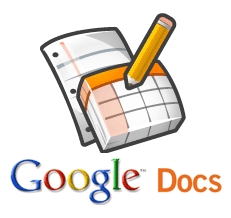
This week's readings are thought provocative and action-oriented. This is what I expected in the courses. The online resources listed out in the course page were all wonderful. I would like to comment on each of the resources.
I have been using Google Sites for the past two years. I have just used it as a course site not as a wiki. After participating in this course, I have understood how I can use Google Sites for collaborative learning. Really Google Sites is the best among all wikis. The reason is that you can customize any page in Google Sites. You can modify the appearance, template, theme, layout, fonts, colour, etc. There are four types of pages available: web page, announcement, list, and file cabinet. You can move a page anywhere within the site. Collaboration is the highlight of Google Sites. You can have three sorts of collaborators: owner, editor, and viewer. Recent Site activity gives you access to the changes done by collaborators. You can revert a page to previous edition at any time. Deleted items can be retrieved within 30 days. You can add as many Apps as possible. You can merge a google document, form, you tube video, facebook, google group, etc. I have created a half dozen of Google Sites. Some of them are private which non-collaborators cannot access. Others are public which anyone can view. I have provided the URLs of those sites below:
1) My teaching site for Postgraduate Students at https://sites.google.com/site/pradheepforpg/
2) My department's site which has details regrading syllabus, resources & everything related to our Department at https://sites.google.com/site/englishdepartmentvoccollege/3) An online research journal "Journal of Technology for ELT at https://sites.google.com/site/journaloftechnologyforelt/
4) A site for the Association of English Teachers interested in Technology at https://sites.google.com/site/eltaicomputertechnologysig/5) An information site for the literary magazine which I run at https://sites.google.com/site/cuckoomagazine/
I really love working with Google Sites. After doing this course, I have decided to use Google Sites for collaborative work with my students. This will definitely encourage learner autonomy in classroom.
 The next thing I would like to discuss is Google Docs. Google Docs is a wonderful way of organising your documents online. Here too, Collaboration is possible. You can publish the documents online; can download them as pdf; and can attach it in email. I often use Google Form (Spreadsheet) for collecting information. It is a easy way to organise a huge database.
The next thing I would like to discuss is Google Docs. Google Docs is a wonderful way of organising your documents online. Here too, Collaboration is possible. You can publish the documents online; can download them as pdf; and can attach it in email. I often use Google Form (Spreadsheet) for collecting information. It is a easy way to organise a huge database.
I learnt about Nicenet only during this course. It is entirely new for me but I was very much impressed with its simplicity and user-friendliness. Nicenet retains all discussions. Hence, It will be an easy way to revise or some up any discussion. It will be very helpful for asynchronous discussions for planning a work. Students can learn form other students as well. It will lead to learner autonomy.I have used Hotpotatos several times. It is a wonderful software to create offline quizz: multiple choice, cloze test, crossword etc. We can also upload these quizzes online.

I also tried ANVILL. I think that it is similar to Moodle, a Course Management System or a Learning Management system. I have a moodle site too at www.pradheep.eduspoke.com. But I have not started using it with my students. After this course, I am plannng to use it. It will help students visualise their progress and therefore leads to learner autonomy.
M. S. Xavier Pradheep Singh

 The next thing I would like to discuss is Google Docs. Google Docs is a wonderful way of organising your documents online. Here too, Collaboration is possible. You can publish the documents online; can download them as pdf; and can attach it in email. I often use Google Form (Spreadsheet) for collecting information. It is a easy way to organise a huge database.
The next thing I would like to discuss is Google Docs. Google Docs is a wonderful way of organising your documents online. Here too, Collaboration is possible. You can publish the documents online; can download them as pdf; and can attach it in email. I often use Google Form (Spreadsheet) for collecting information. It is a easy way to organise a huge database.



